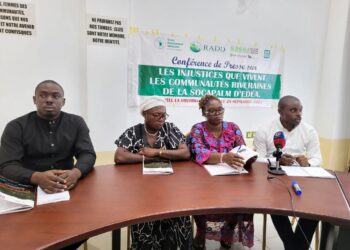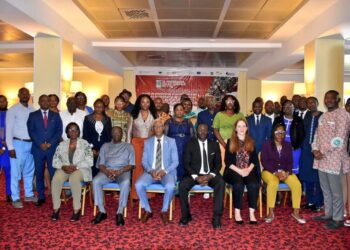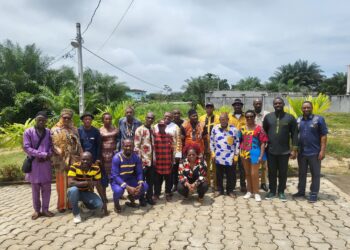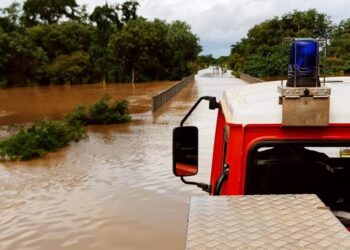The first ever digital conference organized by the Global Landscape Forum (GLF), has ended with environmentalists, expert agronomists and agricultural technologists suggesting sustainable solutions that could be adopted to restore rapidly degrading drylands and ecosystems in Africa.
By Arinze Chijioke
Drylands occupy more than 41% of the global land area and comprising grasslands, agricultural lands, forests and urban areas. Trees and forests in drylands generate a wealth of environmental services and provide habitats for biodiversity, protect against water, wind erosion and desertification.
Africa’s drylands, particularly, are known to be the birthplace of some of the world’s most extraordinary civilizations and species, from ancient kingdoms to wild elephants to “miracle grains” like millet and sorghum.
Sadly, these lands are rapidly degrading, due to the relentless and devastating force of climate change, unsustainable land use and land management, inefficient water use and human activities such as deforestation. At least 340 million hectares of woody vegetation in Africa’s dryland zones have become degraded.
It was in a bid to restore and recover altered and degraded areas that the GLF put together the conference which held between the 2-3 of June with the theme: “Restoring Africa’s Drylands: Accelerating on the ground.”
During the two-day conference, the need to leverage the gains inherent in agroforestry as a nature-based solution towards drylands restoration was underscored by experts.
Agroforestry provides a number of benefits including climate change mitigation, biodiversity conservation, soil health enrichment and air and water quality improvement.
Speaking during the session on Agroforestry: An opportunity for youth and drylands, Sevidzem Ernestine Leikeki, founding member of Cameroon Gender and Environment Watch (CAMGEW), said that when farmers plant Nitrogen fixing trees around their farms for instance, the soil is enriched and enriched soils ensure increase in crop production.
She said that trees also help diversify products and activities, increase income and social development as well as build a heritage for future generation.
Climatic variations, desertification particularly, has remained the major aggravating factor behind escalating conflicts between herders who often go in search of fertile grazing lands for their cattle and farmers who are keen to protect their means of livelihoods and their crops from being damaged by thousands of cattle.
But Leikeki said that when properly leveraged, agroforestry could also help provide fodder for grazers, thereby helping to tackle conflicts among farmer-herder clashes.
Beyond increasing crop production and regulating water circle, infiltration, interception and water retention, experts spoke about the fact that agroforestry can help to create jobs for the young people.
They said it will help them think of what nature-based solutions to come up with such as urban regreening or creation of eco-tourism initiatives and recreational opportunities that the whole being want to use to reconnect with nature.
Speaking on the session titled “A Land of Opportunity: Exploring the potential of drylands for youth employment, Co-founder Green Africa Youth Organization (GAYO) Desmond Alugnoa, said there was a lot of desperation to go back to nature but there is the question of how to go about it.
“This is where the opportunity lies for the young people who have the ability to be create. There is green technology which is an opportunity for young people to seize from this decade of ecosystem restoration and create technologies that can tell companies can profile their carbon footprint,” he said.
Ecosystem degradation affects the wellbeing of at least, 3.2b people, that is 40% of global population and it cost the world more than 6 trillion dollars per year.
Yet an analysis of 163 industry sectors and their supply chains has found that over half of the world’s GDP is moderately or highly dependent on nature and its services.
Little wonder Ibrahim Thiaw, Executive Secretary, the United Nations Convention to Combat Desertification (UNCCD) said to speak about land is to speak about life in all its complexity, whether wet, dry or severely degraded.
Speaking on the session: Framing the UN Decade: An African perspective on ecosystem restoration, Thiaw debunked certain myths about drylands including the fact that they are not productive lands, are not rich in biodiversity and have little to offer to resolve climate crisis.
He also debunked the notion that drylands do not contribute much to the economy, are wastelands that are not worth investing in and that people deliberately destroy their environment in drylands.
By 2050, global crop yields are expected to fall 10% due to soil degradation. As a result, world food prices are expected to rise by an estimated 30%.
Reacting to this, Inger Anderson, undersecretary general, United Nations Environment Programme (UNEP), said that the wave of destruction and suffering brought by the COVID-19 pandemic will be very little compared to what we will see except urgent steps are taken to address the crisis.
She noted that although a lot of commitments have been made towards drylands and ecosystem restoration with over 150 countries putting restoration targets covering 1billion hectares, promises don’t put trees and grasses in the ground. But action does.
“We need to get the finance flowing, get investments in nature-based solutions which needs to triple by 2030 and increase by 5 times by 2050 to meet our goals for climate, biodiversity and land,” she said.
She further noted that countries must do well to adopt inclusive wealth modules that value nature and prompt investment as well as legislate to change prevailing agricultural practices that destroy ecosystems.
She maintained that without large scale restoration of the degraded drylands, the objectives of the 23rd agenda for sustainable development agenda and sustainable development goals will not be met, adding that for every dollar spent on nature restoration, 9 dollars of economic benefit can be expected.
While land loss aggravates droughts, floods, food and water scarcity, disease and forced migration, land restoration offers a part toward a green recovery and achieving sustainable development goals.
The two-day conference was held before the official launch of the UN decade on ecosystem restoration 2021-2030 which is a rallying call for the protection and revival of ecosystems all around the world, for the benefit of people and nature.








